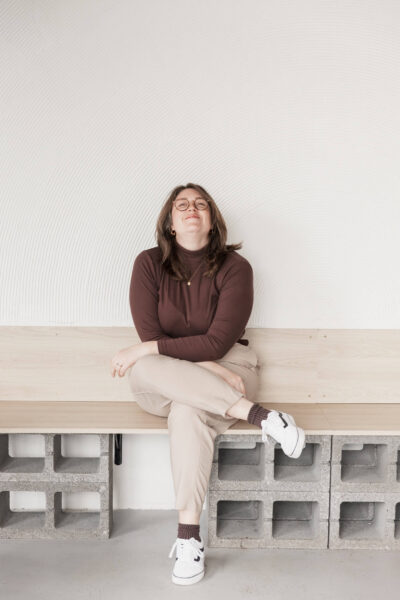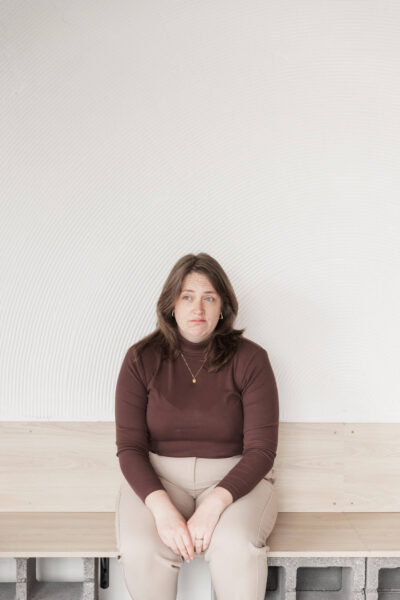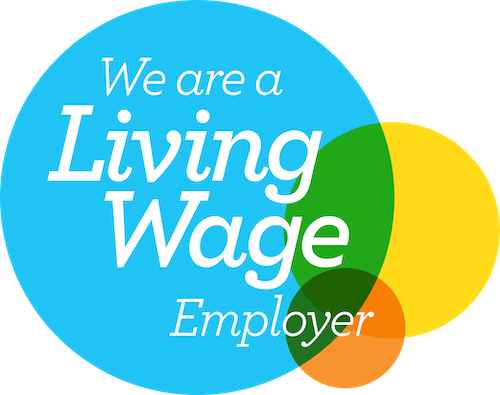WordPress is an incredibly powerful and flexible website platform, and is the Studio Cotton technology-of-choice for our website projects. I could sing its benefits all darn day, and often do, but I also totally appreciate that as a complete beginner, WordPress can be hella overwhelming.
Every new website starts as a blank canvas – a contentless opportunity to build your business online, your tidy new shop, or your sumptuous new blog – and the WordPress blank canvas can be way blanker and more confusing than an all-in-one solution like Squarespace, Shopify or Wix. But, it’s not out of reach for a patient beginner who is able to dedicate their time to understanding the WordPress nooks and crannies, and could unlock a banging website that achieves all your hashtag bizgoals. Even celebrities find WordPress preferable, and we’ve done the science to prove it.
Open source messiness
WordPress is open source software which means anyone can dive into the code, study the bones of the technology, and create their own customisations. This openness is one reason why WordPress is so darn powerful, with the right pair of hands it can literally do anything. In my experience it’s also one of the reasons why WordPress is so confusing to beginners: there are very few universal standards; especially when it comes to naming and nomenclature.
Two developers can create the same WordPress component, and call it something completely different. Widgets or blocks, archives and catalogues, titles vs headings. The reality with WordPress is that’s it’s not two developers, it’s 1,000, and their priority is not helping you understand the similarities between their product, and their competitor’s product.
What’s more, the universal terms like categories, posts, attributes and tags can be used in so many different ways, that the how-to you read on one blog might be the exact opposite of what you need for your website.
Levels of WordPress technology and a lil vanalogy
I started this blog by describing Squarespace, Shopify and Wix and all-in-one solutions. WordPress is very much not an all-in-one solution – it’s the combination and layers of technologies that allows for the creation of any website using the WordPress platform.
Here’s a rough guide of the layers of WordPress, using a van anology (or vanalogy if you will) which if I’m honest was a terrible choice because I know very little about vehicle construction – I’m sure that will become clear very soon.
WordPress Content Management System
WordPress itself is the engine of the website/van. The thing that provides power, and without it you just wouldn’t have a website.
WordPress Themes
On top of the engine, you have a WordPress theme, or the body of the van. Themes can vary wildly, and I mean WILDLY in terms of their impact on the final website. Some themes are basically complete websites or vans, where you can pop in your content, colours and logo and you’re ready to go.
Others are purposely threadbare, ultra-lean chassis made for efficiency and speed, upon which you can build whatever you like.
You can also build your own themes, but as with mechanic-ing a van from the engine up – only trusted, experienced experts should attempt a custom build.
WordPress Plugins
WordPress Plugins offer non-essential extras, and when I say non-essential – I mean non-essential to every website – like a spare Continental CST 17 125/70 M 17 is essential for a Ford Transit Custom, but totally unnecessary for a Fiat Doblo Cargo.
I totally Googled that last sentence so if you’re a van expert and that was gibberish; I tried my best, ok. I tried.
Even though individual plugins are inessential, there are plenty of plugins that we use on all our client websites and our own. Some that cut down our administration time, some that speed up sites, others that give us better visibility of search engine optimisation (SEO) factors.
WordPress plugins and themes can be free, premium, or freemium (where you get a base level for free, but can upgrade or purchase addons). Generally, paid-for options for complex challenges provide a more robust solution – but this isn’t guaranteed.
There are plenty of great themes and plugins that are free, and plenty of terrible ones that cost money.
Page builder plugins
Page builder plugins are a type of plugin that allow you to create pages, layouts and more with a visual editor – this functionality is often controlled by the theme, and many themes come with a page builder from another developer. Page builders include Visual Composer, Divi, Beaver Builder, and our favourite, Elementor.
I freaking love Elementor as you can use it to build literally anything you can think of with minimal coding, and is super easy to pick up for our clients.
Going back to my vanalogy, a page builder plugin lets anyone design the surface of their van with ease. Just make sure you research how to make a great van surface – because just as with web design, you can easily end up designing something terrible that isn’t fit for business.
WooCommerce
WooCommerce is the most popular ecommerce solution for WordPress websites – it’s the ‘shop’ part of your online shop. It’s also free.
As well as WooCommerce being a plugin, there’s a whole heap of plugins out there that enhance WooCommerce. We dip in to the YITH library for many of our ecommerce client projects, as in theory, multiple plugins from the same developer are more likely to work together because they will be using the same structure and nomenclature.
If you’re not sure if you will need premium WooCommerce plugins, just think if any other shop could work without that functionality. If the answer is yes, you’ll probably need an extra plugin. For example, all shops will need products with pictures and descriptions – and that’s built in to WooCommerce. Not all shops will need subscription products or weight-based shipping options, so they’re premium.
I didn’t really have a vanalogy for that one, soz.
Before you get started, brief yo’self.
One of the easiest mistakes to make with a WordPress website, is committing to technology one-by-one as you build a site. You find a plugin or theme that tackles an immediate small issue, when taking a step back might reveal that you’re heading into a blocked alley of impossible challenges.
Always always always start with a website brief. Just a simple list of everything your website needs to do for your business, and then make a list of technology needed to do that. You might be able to find a theme that does the job of 10 plugins, or a plugin that solves 3 problems instead of one.
If you need 3 premium plugins, you might want to compromise on the second-best provider as they offer a discount based on multiple purchases.
I would say now you’re ready to start building a WordPress website, but you probably still have a lot of research to do. Now go make a cup of tea and praise yourself for getting to know WordPress a little better than you did before. You’re doing great.























